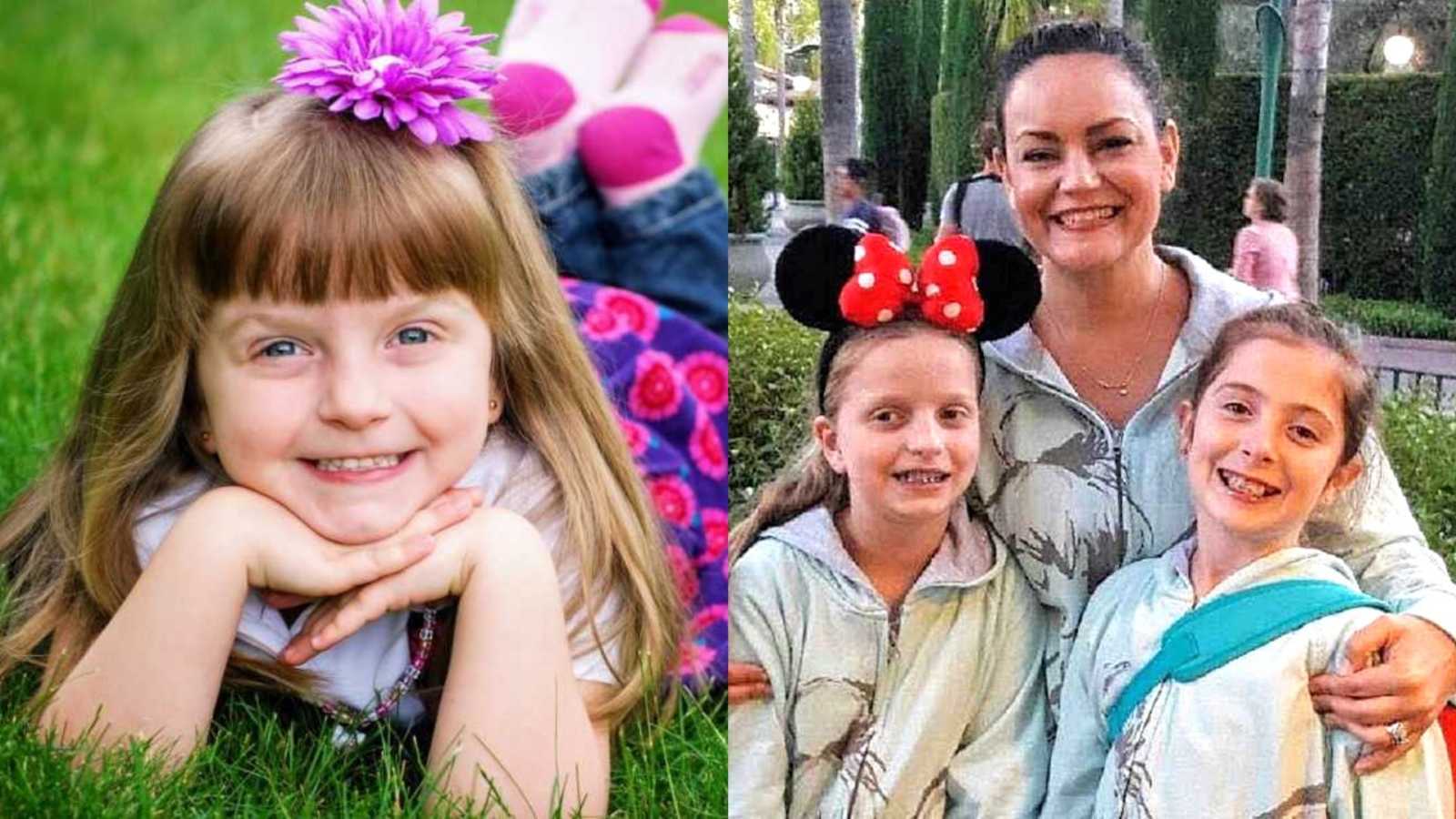“After the birth of our two boys, it was recommended we didn’t have any more children because both pregnancies were very high risk. We truly felt at peace with this, and for three years, we lived as a happy family of four. I grew up in a family with three other siblings, so I had no desire to have a big family.
In 2007, everything changed when I was overcome with the desire to have a daughter. I don’t know where these feelings came from, but they weren’t going away. I remember how confused my husband and family were when I told them I wanted to have another child. We knew having a child naturally wasn’t an option, so we looked at adoption. Truly, we didn’t know where to begin in looking for an agency, so I just started searching on the internet and calling them one-by-one.
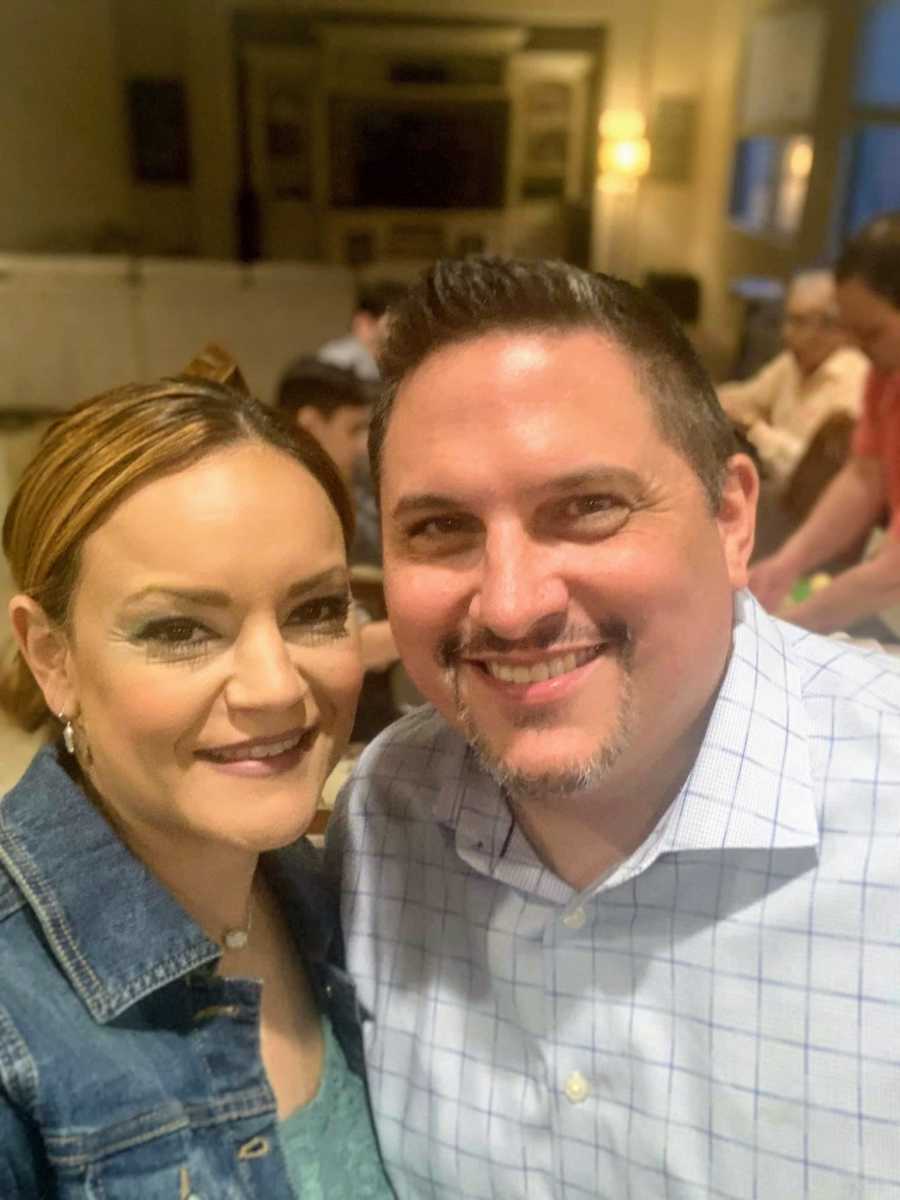
I called about a dozen agencies but had sticker shock with a price tag of over $20,000. I am also extremely impatient, so when they told me it could take up to two years to be matched, I was so disappointed. The last agency I called shared with me that I could adopt from the Child Welfare system and it was free. I remember how confused I was about the difference in cost from the other agencies I contacted and child welfare. How could it possibly be free? Once in touch with a representative from child welfare, he explained these children have been removed from their birth families for multiple reasons, and the agency had children available for adoption.
I called DHS the next day, and we began the process to adopt the same week! I was on top of the world emotionally! I couldn’t believe how fast and easy this process was. Our classes started the next week.
We immediately attended our certification classes, and shortly after the second class, DHS called us to let us know they had a little girl who was eligible for adoption and was a perfect match for our family requirements. They asked us if we could pick her up immediately. She was a 13-month-old Korean girl, healthy, strong, and had a charming character. Like many parents whose children are in foster care, her mom had her rights terminated. We were encouraged by our caseworker since she would likely be available for adoption because her mom had also had her rights removed, as she had with all of her previous four children.
When we brought her home, I was immeasurably filled with overwhelming joy. As our dream was coming true of having a daughter. We hurried to the store to buy a car seat, clothes, paint and decorations for her room, and everything else we thought she would need. We picked her up and spent the next ten months loving her, integrating her as a member of our family as though she was there all along and no chance of going anywhere else. She was perfect for us!
In our tenth month of care, expecting to transition into the adoption process, we received a phone call we never expected to get. We were notified, as if inconsequentially to the past ten months, she was being returned to her mom and going to live with her at a rehab center.
Devastation is not even the right emotion to describe my feelings. While we were foster parents, I had fully transitioned and accepted my role as her forever parent. This was a heartbreaking assault as the news ignited confusion, betrayal, anger, pain, and a motherly defensiveness, which immediately smothered my soul.
The news we received took us by complete surprise. It was the first we were made aware ‘this happens with foster care sometimes. The ultimate goal is to return these children to their parents.’ The idea this was not going to be forever never entered our minds. Looking back now, the only reason we were fast-tracked through the placement system was that the need for foster parents was overwhelming state resources and available placement homes. There were thousands of children every month needing homes, and I’m sure our certifier had good intentions. She did later inform us she truly believed our foster daughter would end up available for adoption. She was wrong.
The grief didn’t end any time soon, but sitting in it wasn’t working for me either. The desire for a daughter was still very strong. Our eyes now open to the risk and the good news that bio-families can heal and be restored, we felt called to continue being foster parents with the intent to adopt. Now, we were more informed, and we felt like we could foster a few children while we waited for our daughter. Our certifier also told us it looks better on the adoption application if we were foster parents, so we jumped back in. We told our certifier we wanted a baby, a girl, and a child who most likely would be available for adoption. I was so hopeful at first.
We were asked to take kids regularly, but they were usually at least 3 and most of the time over 5. I was quickly learning babies are easier to place with extended family, so they less frequently need foster homes with the intent of adoption. This age group was the same as my boys, but I wasn’t prepared for the needs of these kiddos. They had been through traumatic circumstances, were removed from everyone they loved, and often had mental health diagnoses already. I was in my late 20s and overwhelmed with the lack of available placements for these children, so I kept taking them in.
I found a new purpose in helping these children and learning all I could about their different diagnoses. Learning how to help these children was a full-time passion for me. It also uncovered a few diagnoses I didn’t feel would be a good fit for my parenting and our family. These were Fetal Alcohol Spectrum Disorder (FASD) and Reactive Attachment Disorder (RAD). I shared this with my certifier and asked not to be considered for children with these diagnoses.
We were foster parents for 10 years and fostered a total of 77 children. Of those children, two girls became available for adoption, and are now a part of our forever family. We got our youngest when she was 17 months old and our oldest when she was 4.
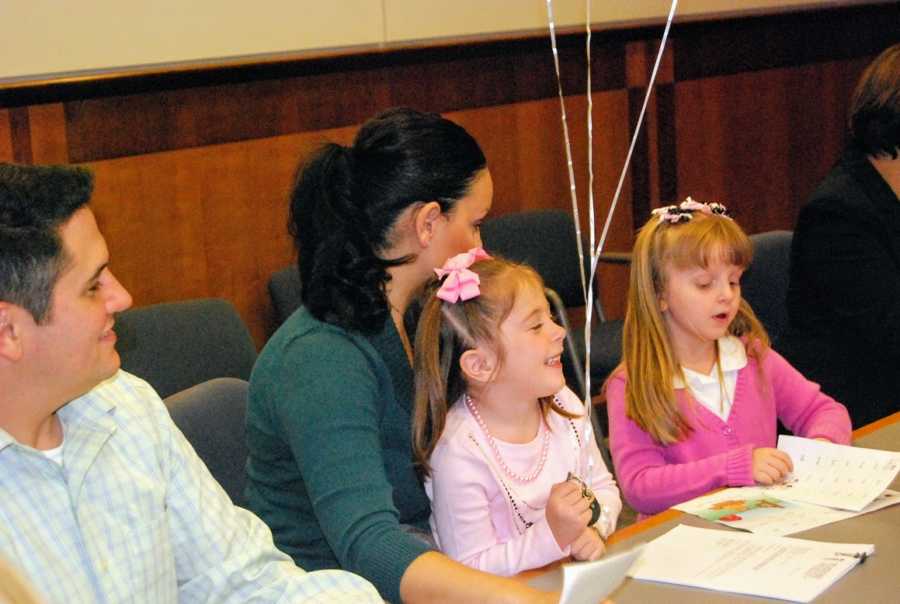
I remember being called about our youngest. She had been in a home with other kids, but due to safety concerns, she needed to be the youngest child in the home. The reasons she needed to be moved wouldn’t be a concern with us, so we happily welcomed her. She had been surrendered by her mother and had a very traumatic first year of life. She was born at 31 weeks and was only 3 pounds. She had a long list of birth complications, so it was a miracle she was alive.
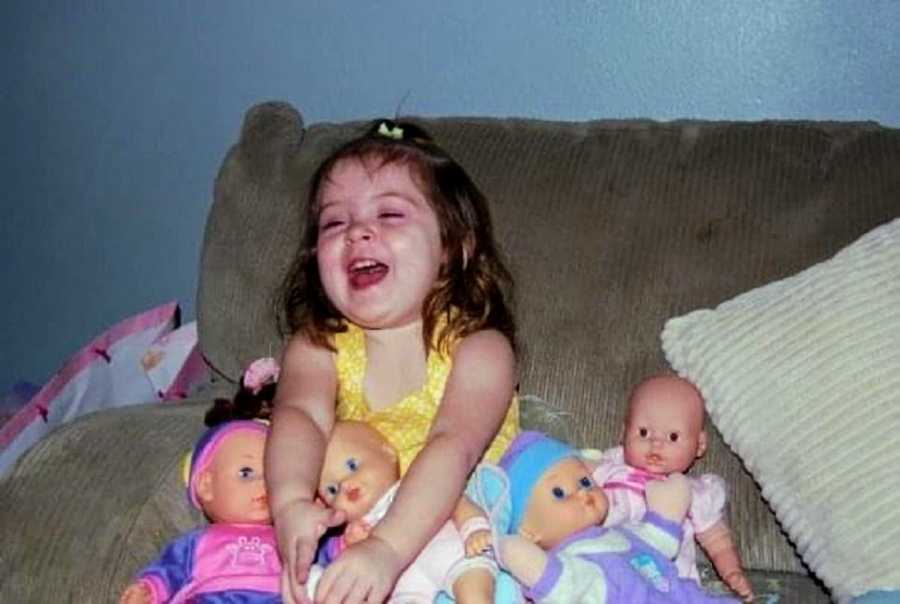
When they first placed her with us, they didn’t know what diagnosis she may have, but they knew she never talked. The first night she was with us, she sang me ‘Twinkle Twinkle Little Star’ at an almost inaudible level. She could definitely talk and was really smart. I’m not sure why she hadn’t in the past 3 months of foster care, but I was so thankful to hear her. She continued to blossom and was as cute as could be. We were thrilled to adopt her.
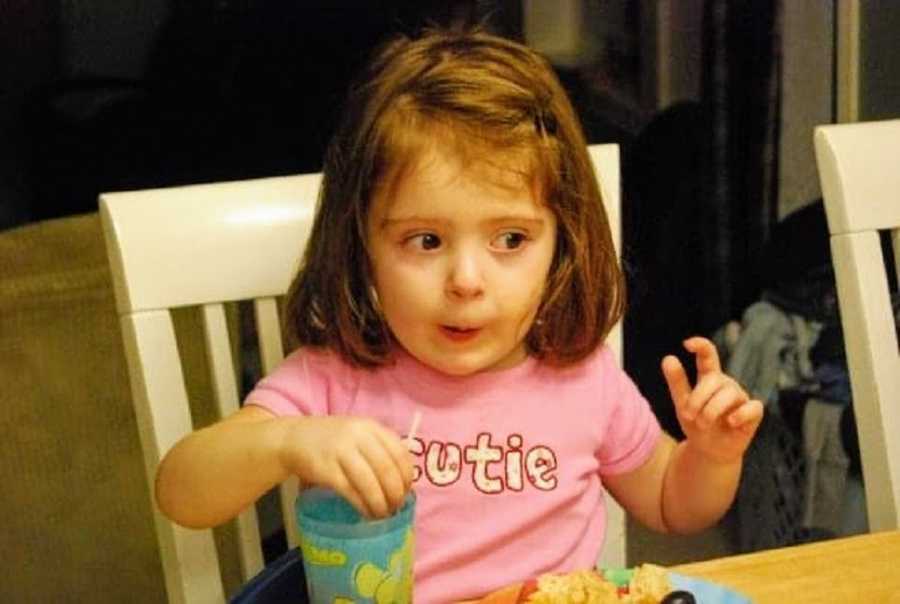
Part of the adoption process was getting a mental health diagnosis, and I was looking forward to sharing my parenting struggles with someone who had a degree. I did my best to search online and ask her caseworker about what I struggled with, but our daughter was just so cute! Some of my concerns (real safety concerns) were that she talked to strangers, hugged anyone, would sit on peoples’ laps, would leave with anyone, and laughed when people got hurt. She was also just as satisfied with positive attention as she was negative. We chalked this up to normal 3-year-old behaviors for a child who had been in foster care and experienced the trauma she had been through. Her psychologist disagreed.
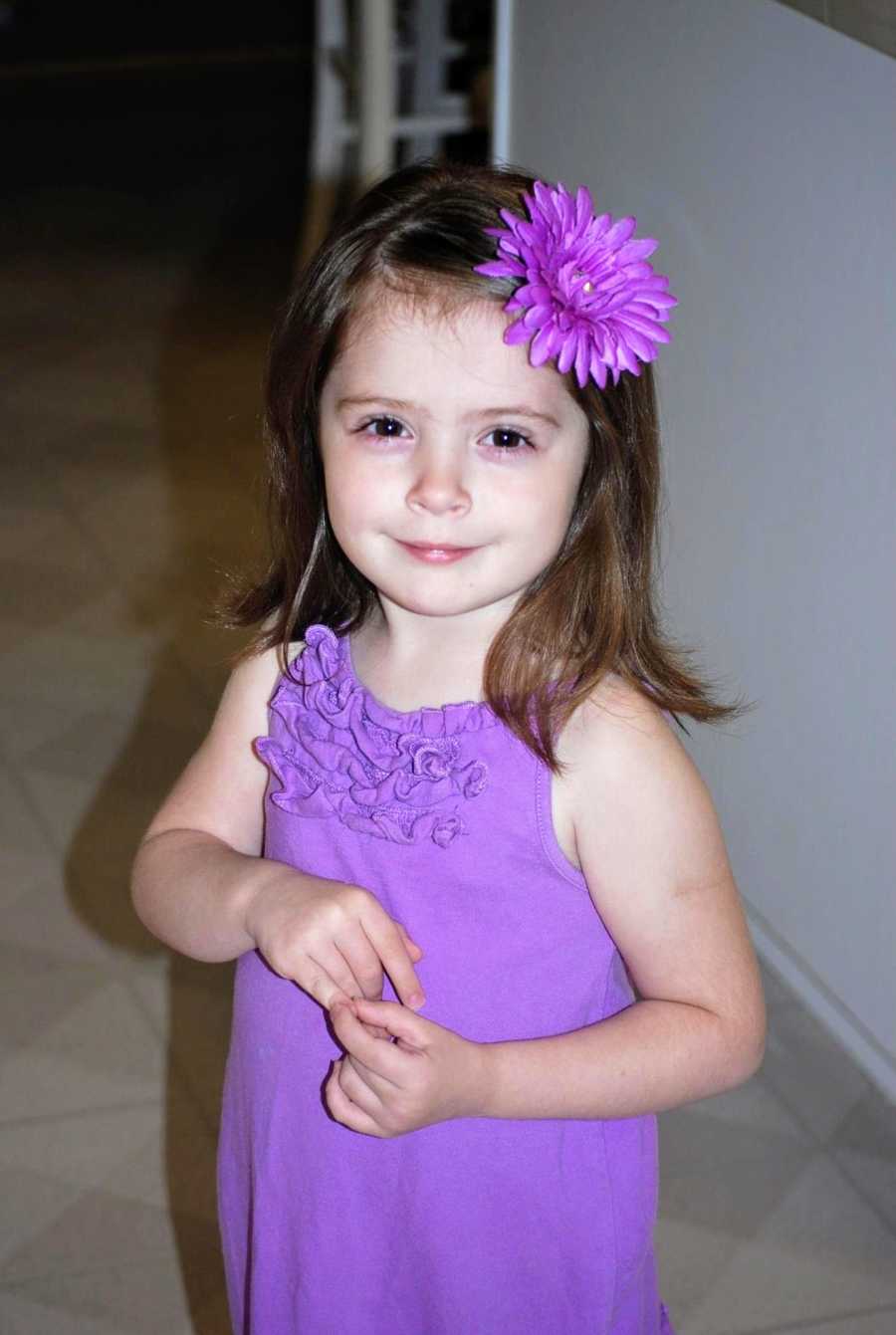
The psychiatrist was the first person who gave her a diagnosis of Reactive Attachment Disorder, which has been recently updated in the DSM to be called Disinhibited Social Engagement Disorder (DSED). When we got the report, I honestly didn’t take his diagnosis as seriously as I should have. I remember telling my husband at the time, ‘Gosh! Based on this, almost every 3-year-old in foster care must have RAD.’ I wish I had known the life-altering impacts of RAD before I made a commitment to adopt; at the very least, we could have been prepared to serve our family more proactively and prevented tremendous pain.
What is RAD? A child with reactive attachment disorder has been subject to neglect or abuse and fails to establish the expected bond with their primary caregivers. This can result in irritability, sadness, fearfulness, and difficulty interacting with adults or peers.
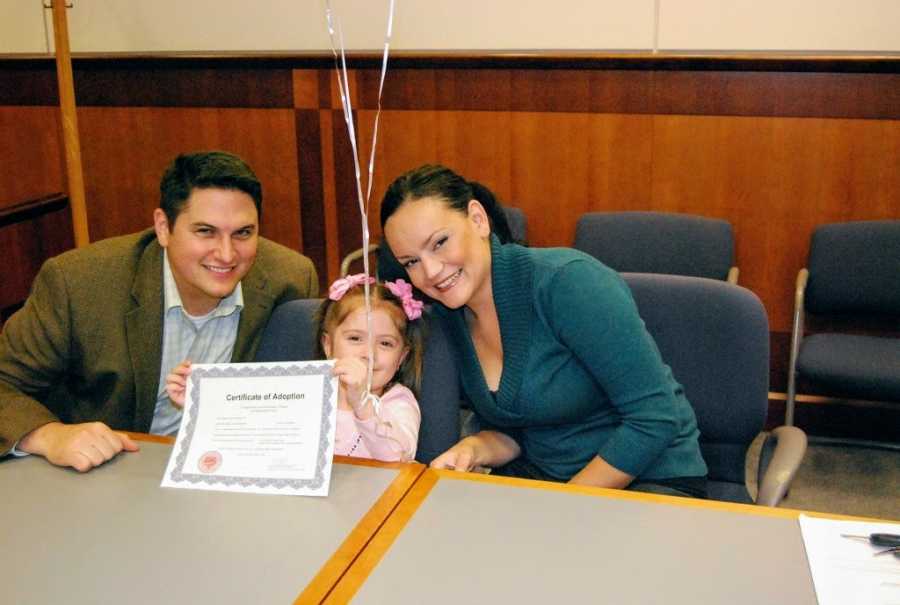
Our eldest daughter came to our home when she was 4. She was already available for adoption, and her caseworker was in the beginning process of writing her adoption posting. I remember she was brought to our home after spending over two years with her previous foster family. It wasn’t ideal to have her moved this close to adoption, but her foster mom was no longer doing foster care. We were nervous about how she would handle this transition, but we were prepared to help her. She came with a wardrobe fit for a queen. She was little but extremely stylish.
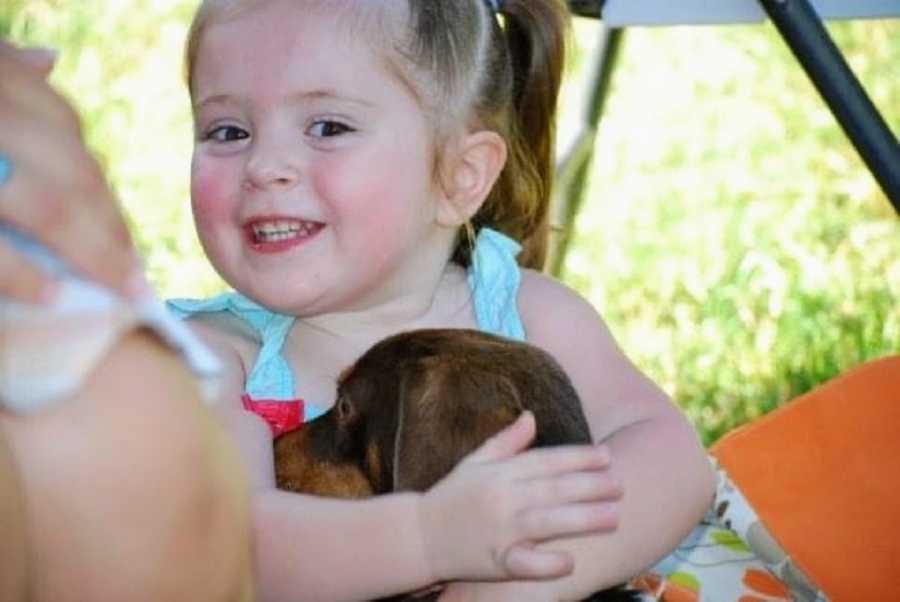
She was a perfect child. She did everything we asked her to, never argued, and was a chameleon in every situation. When her caseworker posted her adoption listing, we applied to be considered. She had over 100 applications in less than 30 days. We weren’t surprised though, because she was such a delightful child. We were beyond thankful when we were chosen as her forever family.
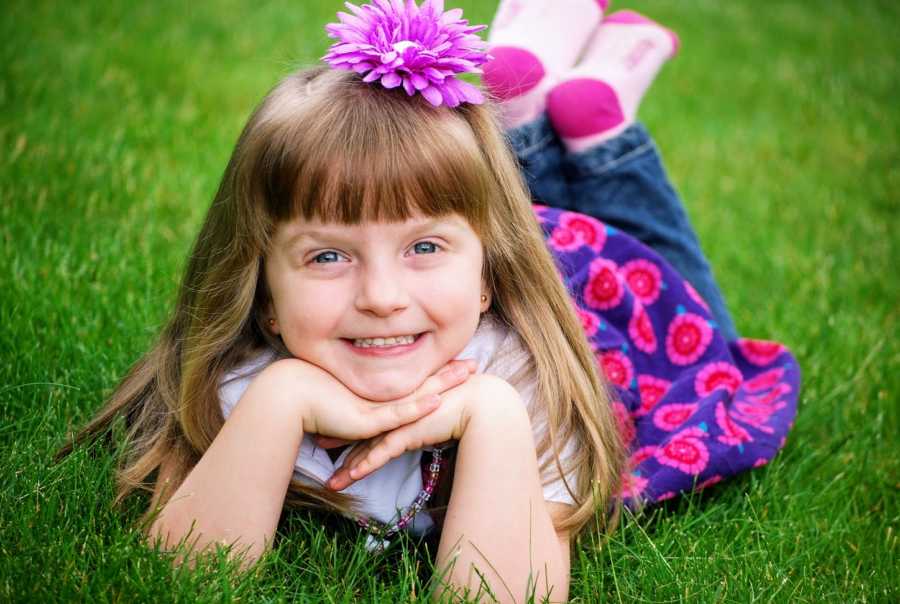
As she began in elementary school, we began to notice things we couldn’t understand. We knew she had an extremely high IQ, but she began cheating in class. She would visibly need help with something but never asked anyone to help; she smiled, but every smile looked exactly the same. As she got older, she was overrun by her attempts to impress everyone around her, and began to lie more and more to keep her stories alive. While this is normal in some measure with children growing up, for her it became pervasive. When she was 11, we hired a psychiatrist to evaluate her behaviors. She was diagnosed with Reactive Attachment Disorder (RAD).
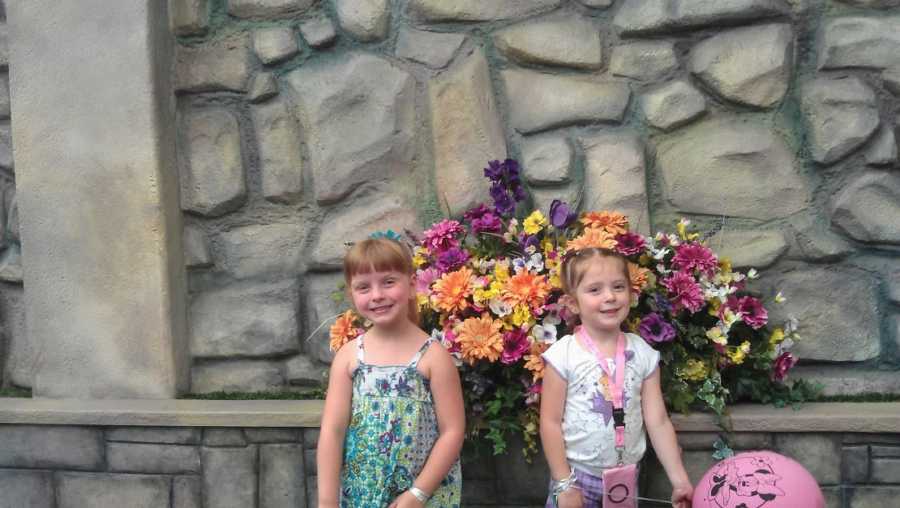
While aware of RAD, I was still unclear about the causes, consequences, behaviors, and specific care needed for them. So, I began looking into their condition and how to best support them.
What I learned about the disorder, its characteristics, care, and the possibility of a cure was a mix of heartbreak, frustration, and general bewilderment. As far as we know, RAD is not curable, and care is difficult to find. It isn’t talked about often, and the resources are slim compared to other mental health diagnoses. If you adopt or have a child who had exposure to drugs, violence, alcohol, or abuse in utero, you have up to a 50% chance of walking in my shoes. I didn’t know this. I would have been better prepared had I known this.
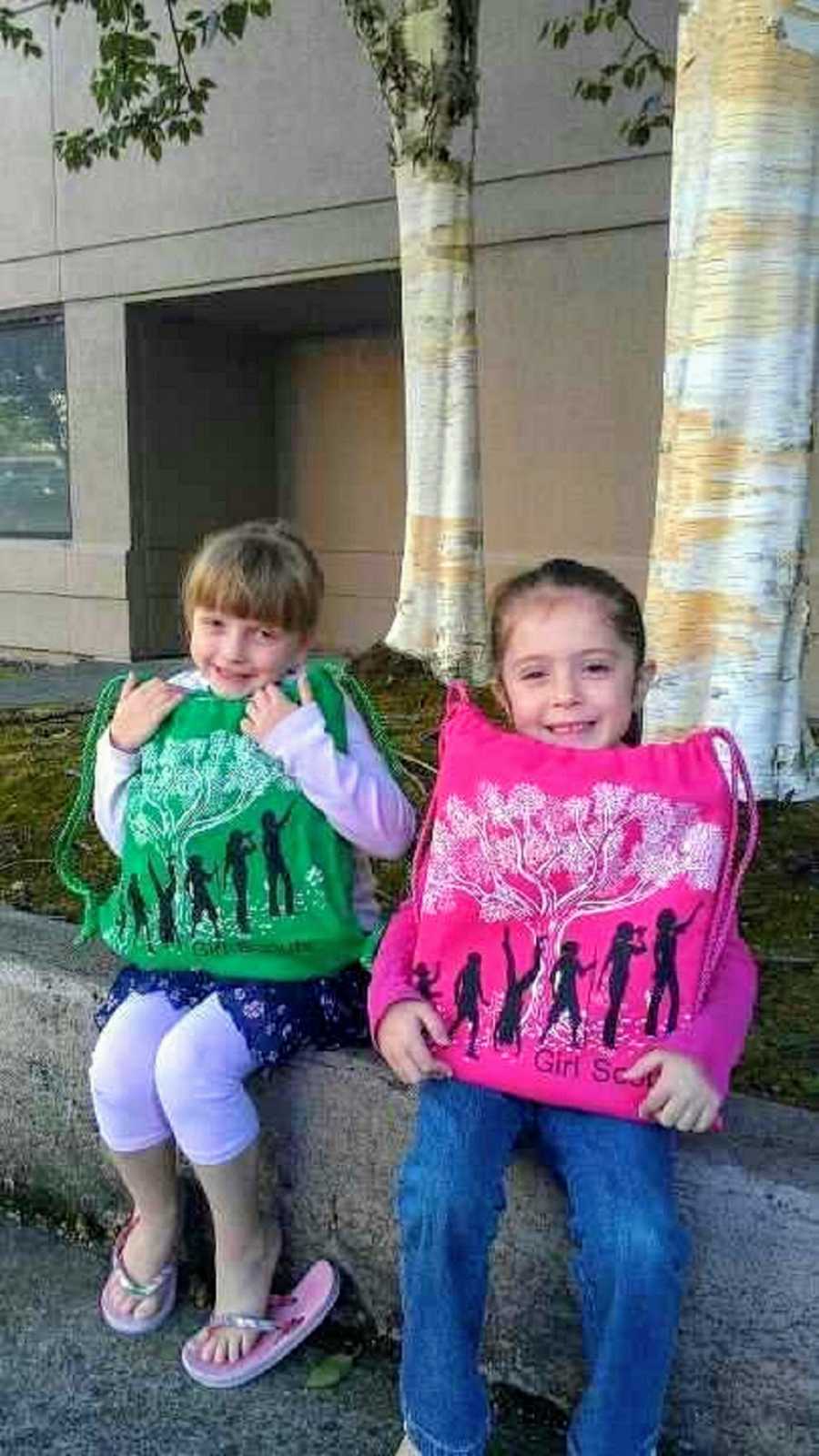
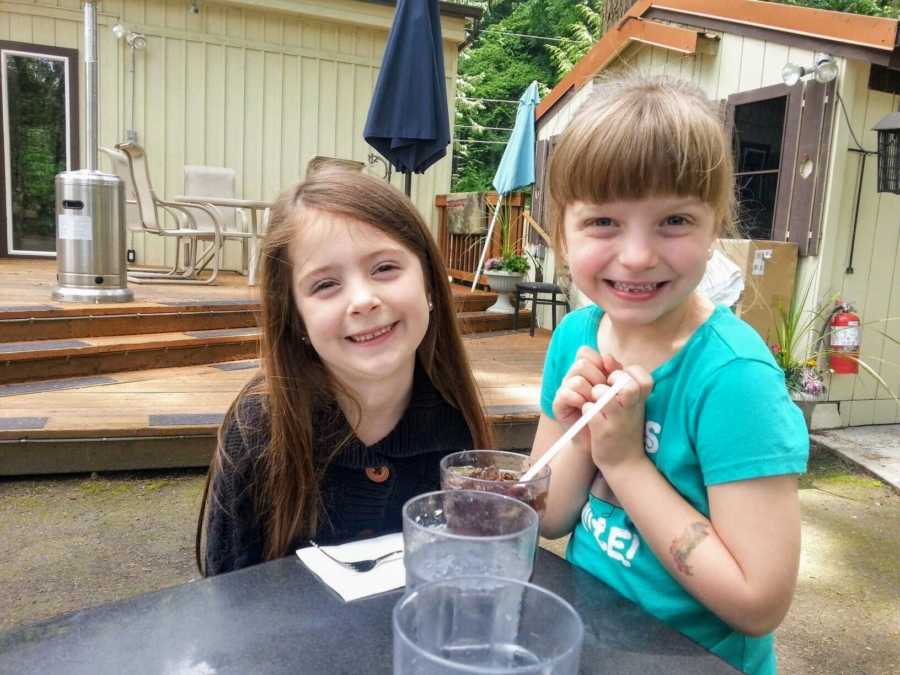
Some things we have tried over the years are counseling, essential oils, parent-focused therapy, medications, play therapy, attachment therapy, and every internet-suggested therapy I could find.
Our daughters are now 15 and 14. We have a few years left to really help them be prepared for adulthood. RAD children often have a strong likelihood of developing Borderline Personality Disorder as adults, and this unstoppable reality is haunting me. I want nothing more than for my girls to heal, feel secure in themselves, and have an incredible life. I share my story with others with the hoping my honest vulnerability will raise awareness, advocacy, and understanding to better serve families and children in the future.
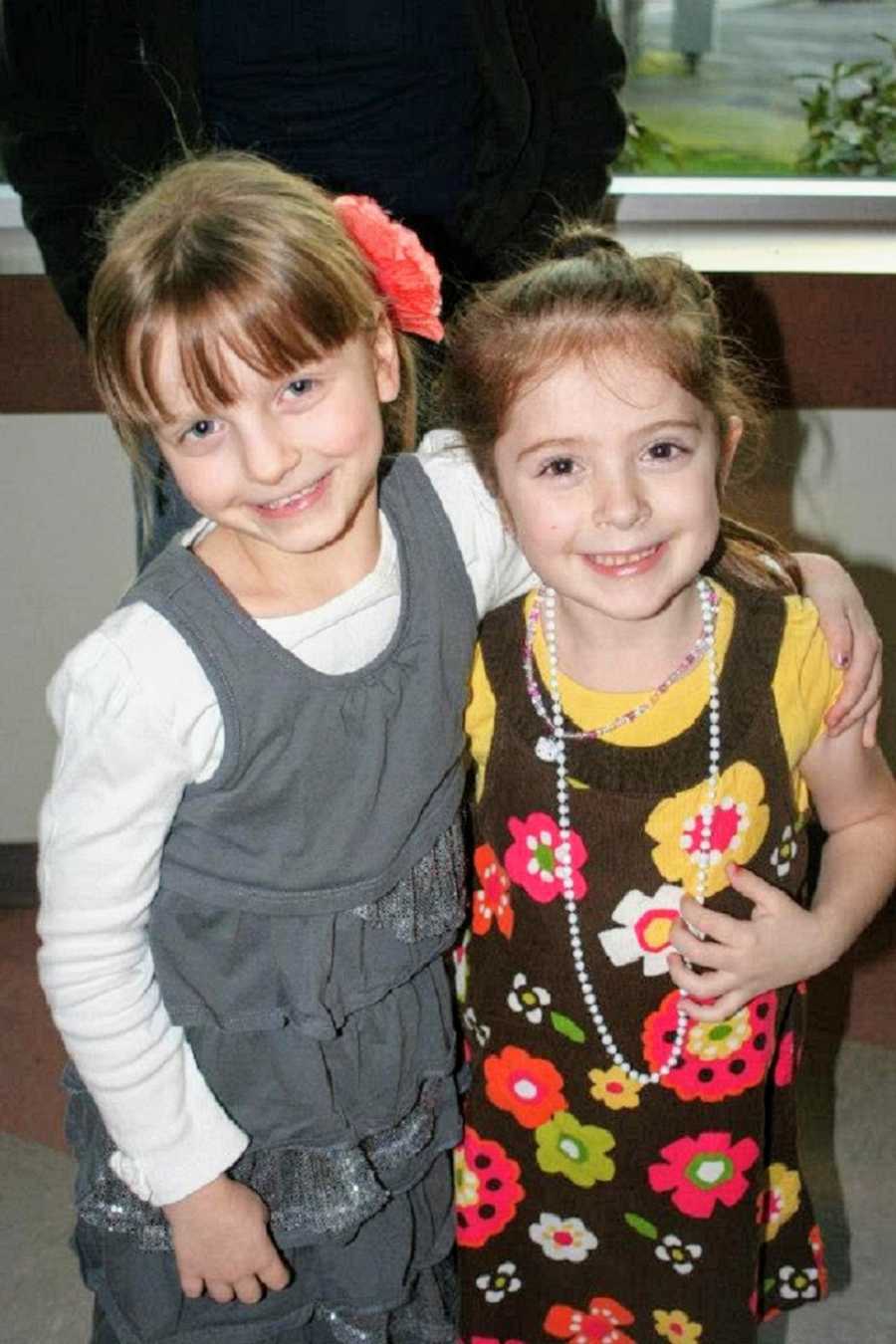
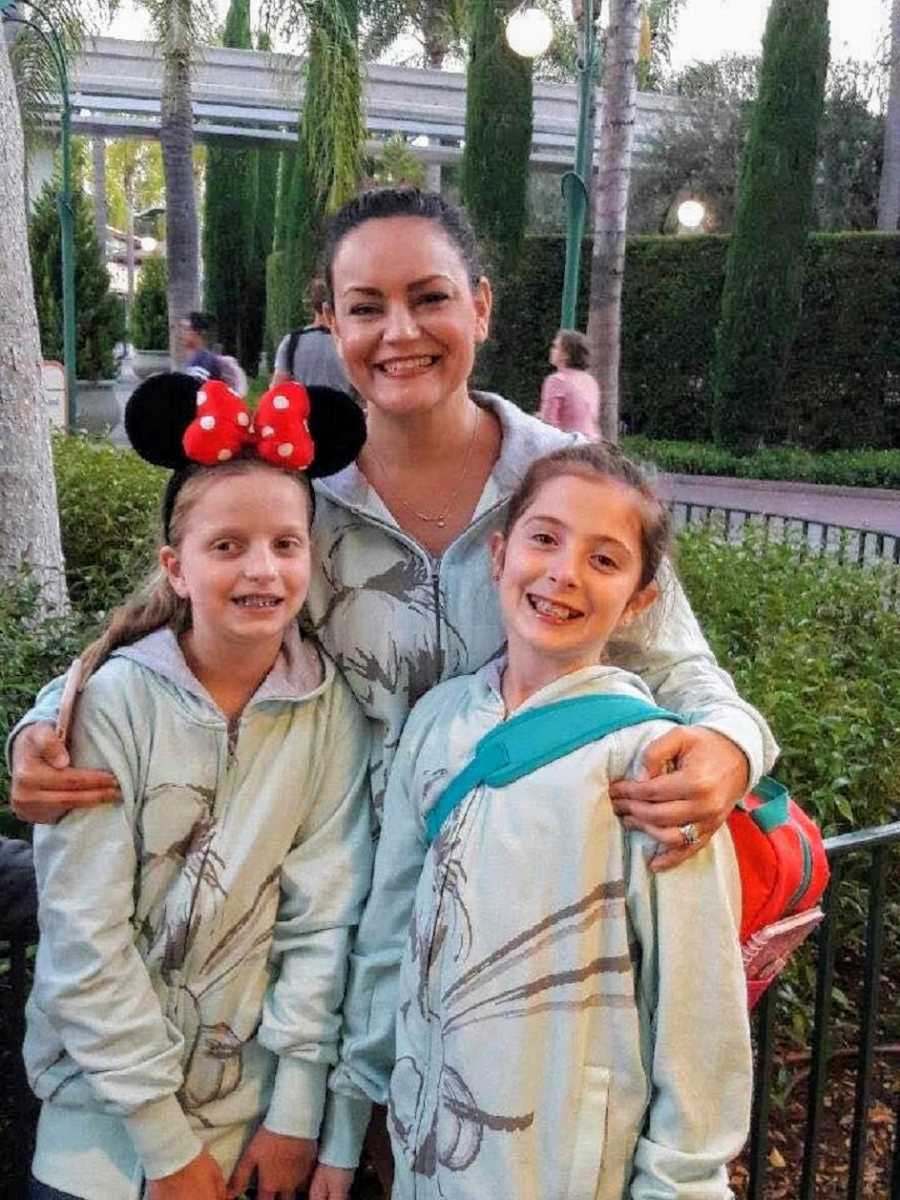
A friend shared a list of RAD characteristics and experiences with me, and it was the first time I felt validated in knowing I’m not alone. Like, me, I know there are many families facing similar challenges, unaware of what’s really happening, and uncertain about what to say, who to say it to, or whether to say anything at all. I often felt lost and remained silent for years because I felt like no one would understand. Not anymore. I know now we need to raise awareness and start developing strong support programs and awareness for families entering into adoption. Like me, we need to do this for those who are unaware of the life-altering risks and challenges they, their families, and their futures may come face to face.
If you want to understand what it’s like to parent a child with RAD or DSED, this is just a tiny summary of the list my friend shared with me:
1. Children with RAD or DSED are very different at home with the parents vs. outside the home. They are often described as ‘charming’ and ‘delightful’ by others when things in the home are decidedly different.
2. Children with RAD often have poor boundaries and therefore are socially indiscriminate. They can also be socially withdrawn and hypervigilant.
3. Adoptive parents sense love will not be enough to heal their children.
4. Adoptive parents realize love is not working not healing or repairing their child’s behaviors developed under trauma.
5. Adoptive parents don’t tell others how bad things are because they don’t trust others will understand, and they would rather suffer silently than be judged or worse, have their child judged.
6. Adoptive parents who do share won’t share the worst in order to protect their child’s privacy. Whatever they are telling you, imagine it’s at least ten times worse.”
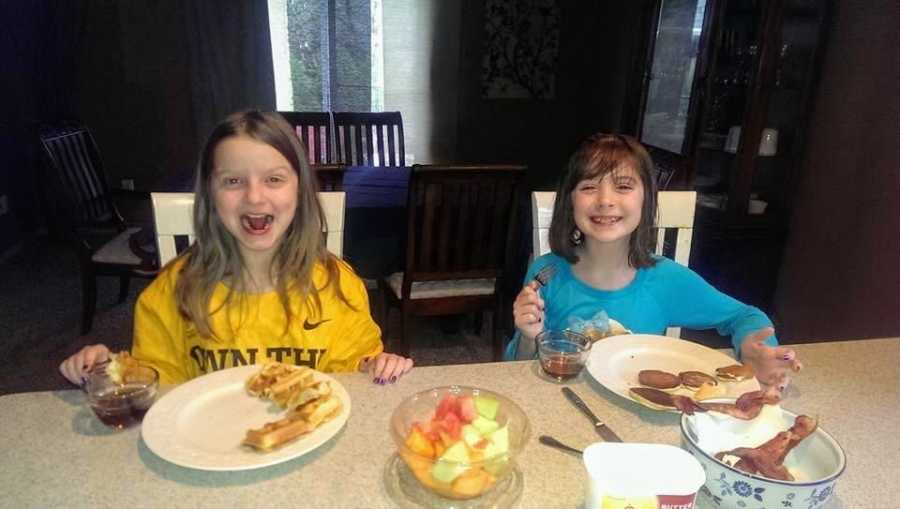

This story was submitted to Love What Matters by Christine Hartmann of Las Vegas, Nevada. You can follow their journey on Instagram and Facebook. Do you have a similar experience? We’d like to hear your important journey. Submit your own story here. Be sure to subscribe to our free email newsletter for our best stories, and YouTube for our best videos.
Read more stories like this:
Are you or someone you know looking to adopt? Please SHARE on Facebook to make them aware there is a community of support available.

